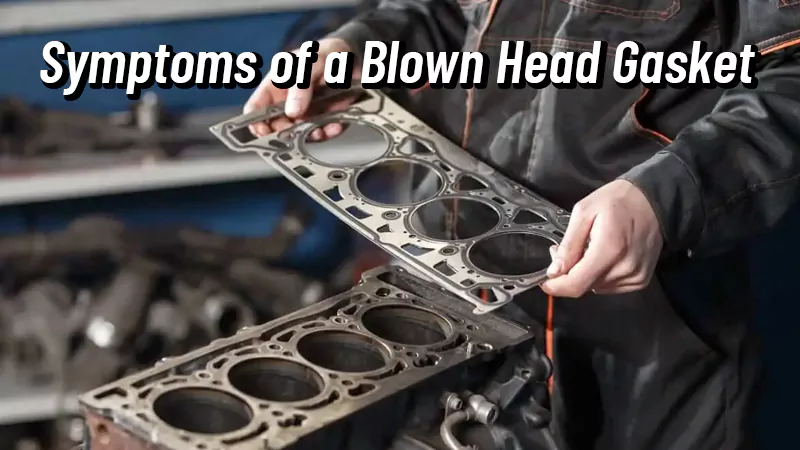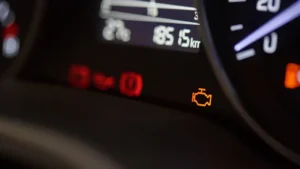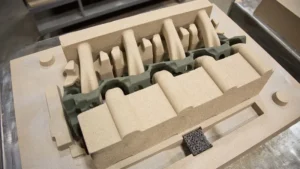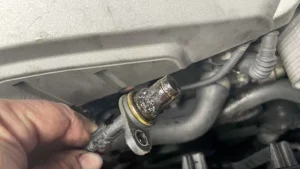Your vehicle’s head gasket is one of the most critical components in your engine, yet it’s often overlooked until something goes wrong. It sits between the engine block and cylinder head, sealing the combustion chambers while keeping oil and coolant separate. When a head gasket fails, the consequences can be severe—ranging from reduced engine performance to complete engine failure.
Knowing the symptoms of a blown head gasket, how to confirm it, and what preventive measures to take can save you thousands of dollars and prevent unnecessary stress. In this article, we’ll break down the signs, explain why they happen, discuss diagnostic methods, repair options, and preventative maintenance strategies—all in a clear, practical, and easy-to-understand way.

How a Head Gasket Fails?
The head gasket has a tough job. It needs to withstand high pressure and extreme heat while keeping the engine’s fluids where they belong. Over time, or due to engine overheating or manufacturing flaws, the gasket can crack, warp, or blow out completely. When that happens, coolant can seep into the combustion chamber, oil can get contaminated, and engine compression can drop.
Common Symptoms You Might Notice
Many drivers first notice something is wrong without realizing it’s the head gasket. Here’s what to look out for:
White Smoke from the Exhaust
One of the first things people often notice is white smoke from the exhaust. It usually has a sweet smell because it’s coolant burning inside the cylinder. You might see a small puff at startup or a continuous thick cloud when accelerating. This happens because the head gasket has developed a leak, allowing coolant to enter the combustion chamber.
Engine Overheating
Another classic symptom is engine overheating. If your temperature gauge keeps rising or the car frequently gets too hot, the gasket could be letting coolant escape internally or blocking proper coolant flow. Overheating stresses the engine further, which can warp the cylinder head if left unchecked.
Milky or Frothy Oil
Check your engine oil with a dipstick. If it looks milky or frothy instead of smooth and dark, that’s a major warning sign. Coolant mixing with oil happens when the head gasket fails, reducing the oil’s ability to lubricate and protect your engine components.
Coolant Loss without External Leaks
Some drivers don’t realize their coolant is disappearing because there’s no visible leak. The coolant might be leaking directly into the engine’s cylinders and being burned off, which can cause white smoke, overheating, and poor engine performance. Regularly checking your coolant levels can help you catch this early.
Loss of Power, Misfires, or Rough Idling
A blown head gasket can reduce compression in one or more cylinders. This often results in rough idling, misfires, or reduced power. You might feel sluggish acceleration, or the engine may hesitate under load.
Bubbles in the Radiator or Coolant Reservoir
Sometimes you might notice tiny bubbles in your radiator or coolant reservoir. These bubbles are exhaust gases that have entered the cooling system due to a head gasket leak. It’s a subtle sign, but if you notice it, you shouldn’t ignore it.
While I’ve listed these as bullet points for clarity, most of the time you’ll notice a combination of these symptoms rather than just one. That’s why paying attention early can save a lot of headache later.
Repair and Replacement Options
The right repair depends on engine condition and damage severity:
- Temporary Sealants: Work for minor leaks but are not a long-term solution.
- Head Gasket Replacement: Involves removing the cylinder head, checking for warping, and installing a new gasket.
- Cylinder Head or Engine Replacement: Necessary if there’s severe warping, cracks, or extensive engine damage.
Choosing the correct repair requires assessing engine age, damage extent, budget, and vehicle longevity.
Conclusion
Recognizing the symptoms of a blown head gasket early can save you from costly engine repairs. White smoke, milky oil, unexplained coolant loss, overheating, and power loss are all red flags. Prompt diagnosis and repair are crucial.
At XINJIN, we specialize in engine cylinder heads, engine blocks, and complete engines. Whether you need a replacement gasket, cylinder head, or full engine solution, our OEM-grade parts and professional guidance ensure your vehicle stays in top condition. Contact us today to schedule inspection or repair and protect your engine from serious damage.



